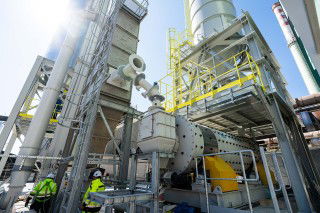Vietnam has submitted its forecast for CO2 emissions by 2030 to the United Nations and has factored in the cement sector for the first time. Under the new plan the country only expects to cut its greenhouse gas emissions growth by nine per cent or nearly 84Mt of CO2 by 2030 compared to its projections using 2014 as a baseline. Emissions are still expected to grow by 844Mt of CO2 during that time.
Vietnam is expanding the scope of the country’s climate plan to include emissions from industrial processes such as making cement and hydrofluorocarbons (HFC) emitted from air conditioning.
With international finance and support, Vietnam said it could increase its emissions cuts to 27 per cent compared with business as usual, which would still see emissions grow by about 677Mt by 2030.
Vietnam previously committed to a 2030 emissions cut of eight per cent compared with business as usual, projected from a 2010 baseline. That was to be increased to 25 per cent conditional on international support.
Vietnam's coal imports surged in the 1H20 to fuel a growing number of coal-fired power plants, which account for more than a third of the country's installed power generation capacity. The country's government in Hanoi has promised to take measures to deepen emissions cuts, including improving energy efficiency, reducing energy consumption, seeking fuel alternatives for the industry and transport sectors, and improving cement and chemical productions processes.

Turning waste concrete and CO2 into a binder
In July, Heidelberg Materials switched on the first continuous-mode enforced carbonation reactor...